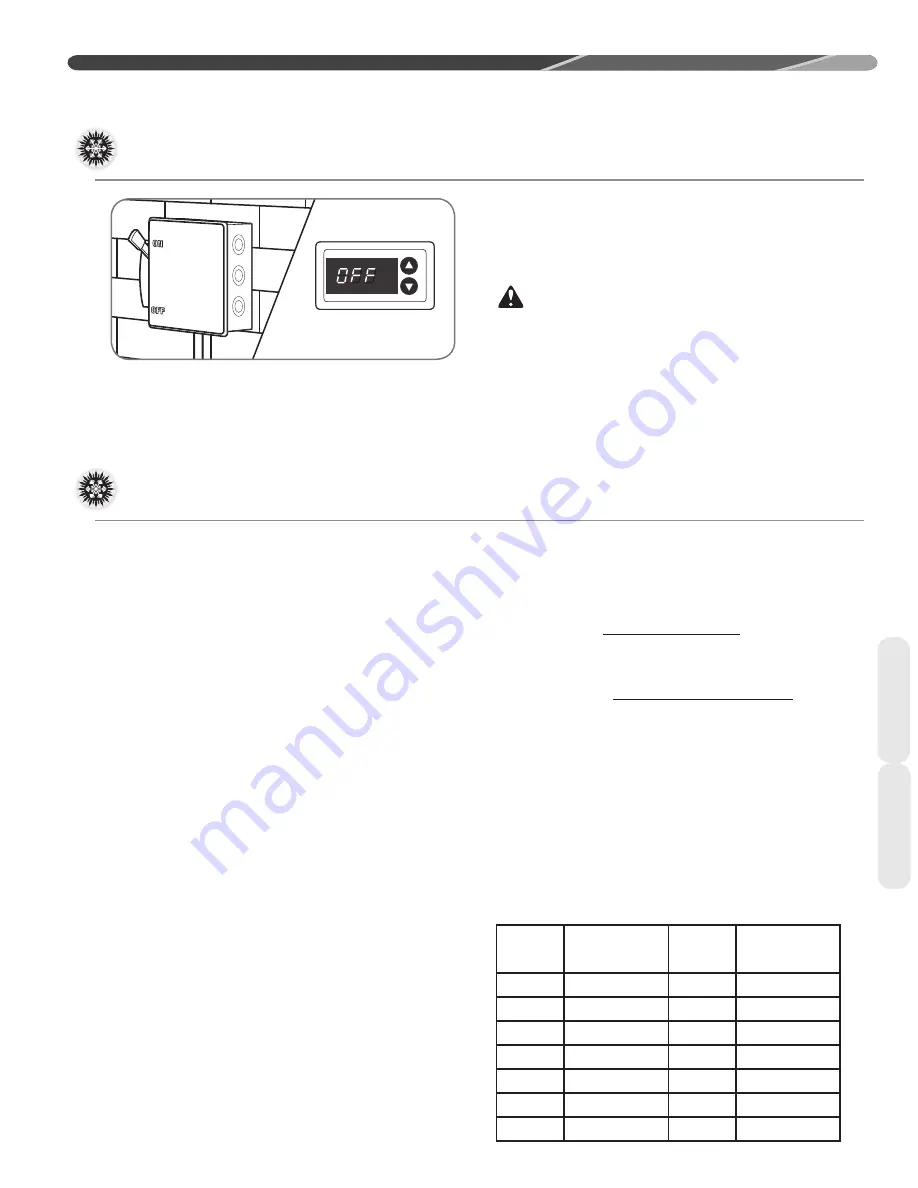
25
The air distribution system has the greatest effect
on airflow. The duct system is totally controlled
by the contractor. For this reason, the contractor
should use only industry-recognized procedures.
The correct air quantity is critical to air conditioning
systems. Proper operation, efficiency, compressor
life, and humidity control depend on the correct
balance between indoor load and outdoor unit
capacity. Excessive indoor airflow increases the
possibility of high humidity problems. Low indoor
airflow reduces total capacity and can cause coil
icing. Serious harm can be done to the compressor
by low airflow, such as that caused by refrigerant
flooding.
Heat pump systems require a specified airflow.
Each ton of cooling requires between 320 and
450 cubic feet of air per minute (CFM). See the
PDQXIDFWXUHU·VVSHFVKHHWIRUUDWHGDLUIORZIRUWKH
system being installed.
Duct design and construction should be carefully
done. System performance can be lowered
dramatically through bad planning or workmanship.
Air supply diffusers must be selected and located
carefully. They must be sized and positioned to
deliver treated air along the perimeter of the space.
If they are too small for their intended airflow, they
become noisy. If they are not located properly, they
cause drafts. Return air grilles must be properly
sized to carry air back to the blower. If they are too
small, they also cause noise.
The installers should balance the air distribution
system to ensure proper quiet airflow to all rooms in
the home. This ensures a comfortable living space.
These simple mathematical formulas can be used
to determine the CFM in a residential or light
commercial system.
Electric resistance heaters can use:
CFM = volts × amps × 3.413
SHC × temp rise
Gas furnaces can use:
CFM = Output Capacity in BTUH*
SHC × temp rise
*Refer to furnace data plate for furnace output capacity.
SHC = Sensible Heat Constant (see table below)
An air velocity meter or airflow hood can give a
more accurate reading of the system CFM.
The measurement for temperature rise should
be performed at the indoor coil inlet and near the
outlet, but out of direct line of sight of the heater
element or heat exchanger. For best results,
measure air temperature at multiple points and
average the measurements to obtain coil inlet and
outlet temperatures.
Star
t-Up
At initial start-up or after extended shutdown
periods, make sure the crankcase heater is
energized for at least 12 hours before the
compressor is started. (Disconnect switch is
on and wall thermostat is off.)
Even though the unit is factory-charged with
Refrigerant-410A, the charge must be checked
to the charge table attached to the service panel
and adjusted, if required. Allow a minimum of
15 minutes of run time before analyzing charge.
CAUTION:
Single-pole contactors
are used on all standard single-phase units
through 5 tons. Caution must be exercised when
servicing as only one leg of the power supply is
broken by the contactor.
9ajÛg
o
ALTITUDE
(FEET)
SENSIBLE HEAT
CONSTANT
(SHC)
ALTITUDE
(FEET)
SENSIBLE HEAT
CONSTANT
(SHC)
Sea Level
1.08
6000
0.87
500
1.07
7000
0.84
1000
1.05
8000
0.81
2000
1.01
9000
0.78
3000
0.97
10000
0.75
4000
0.94
15000
0.61
5000
0.90
20000
0.50
START-UP
Start-Up
Checking Airflow
















































